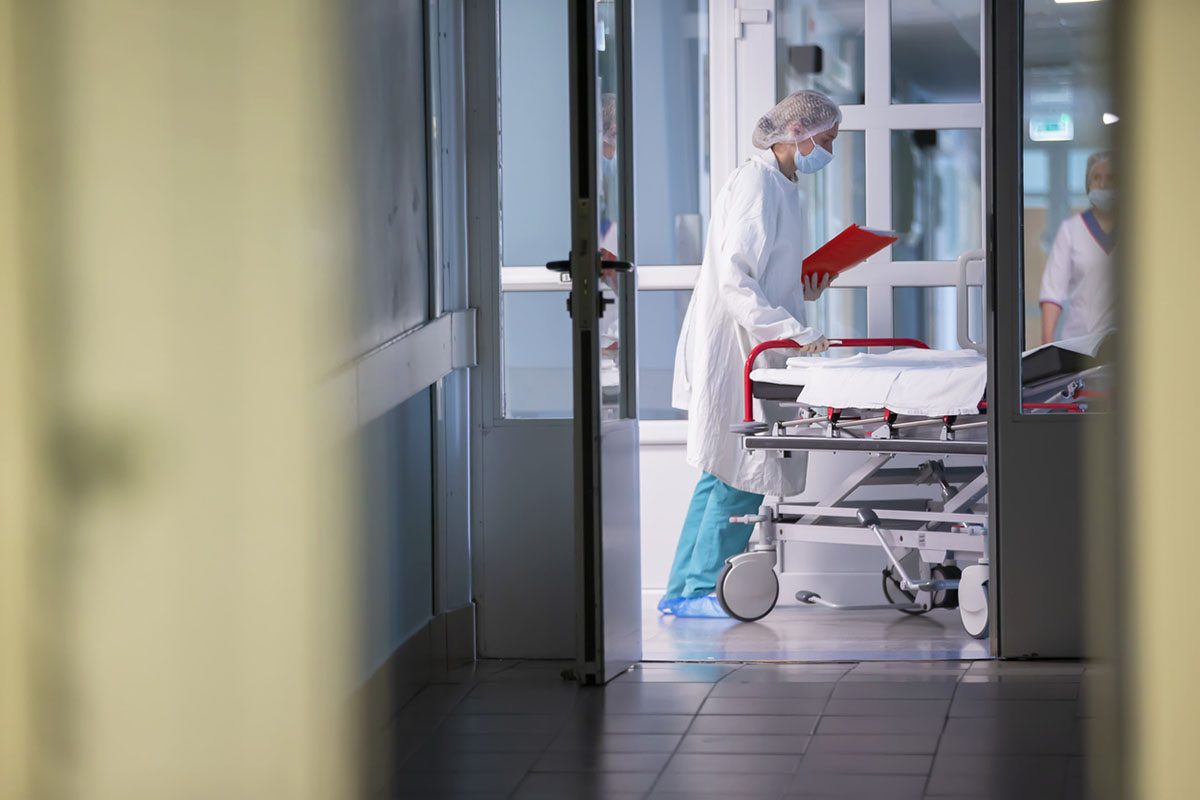Adulteration of cocaine with levamisole is common and can induce serious medical complications. Levamisole is an antihelminthic agent originally approved as an immunomodulator in the treatment of autoimmune disorders and as a chemotherapy adjunct. It was withdrawn from the US market in 2000 but is available in veterinary medicine. Cocaine-using patients may present with nonspecific constitutional symptoms, cutaneous eruptions, leukopenia, vasculitis, and organ damage. Skin manifestations may include severe necrosis, especially of the ear lobes. Here, a case of levamisole toxicity is presented and treatment options are discussed.

Levamisole-Adulterated Cocaine Toxicity: Would You Recognize It?

ABSTRACT
Adulteration of cocaine with levamisole is common and can induce serious medical complications. Levamisole is an antihelminthic agent originally approved as an immunomodulator in the treatment of autoimmune disorders and as a chemotherapy adjunct. It was withdrawn from the US market in 2000 but is available in veterinary medicine. Cocaine-using patients may present with nonspecific constitutional symptoms, cutaneous eruptions, leukopenia, vasculitis, and organ damage. Skin manifestations may include severe necrosis, especially of the ear lobes. Here, a case of levamisole toxicity is presented and treatment options are discussed.
Prim Care Companion CNS Disord 2016;18(4):doi:10.4088/PCC.16br01942
© Copyright 2016 Physicians Postgraduate Press, Inc.
aDepartment of Psychiatry, MetroHealth Medical Center, Cleveland, Ohio
bDepartment of Psychiatry, University of Louisville School of Medicine, Louisville, Kentucky
cDepartment of Emergency Medicine, The Warren Alpert Medical School of Brown University, Providence, Rhode Island
*Corresponding author: Steven Lippmann, MD, University of Louisville School of Medicine, 401 E Chestnut St, Ste 610, Louisville, KY 40202 ([email protected]).
Cocaine contamination with levamisole is increasingly common and can result in serious medical complications. Adulteration of cocaine has become a public health concern due to the risks involved, number of emergency department presentations, and frequency of hospitalizations with serious ailments.1 Vasculitis with dangerous organ failure can result from levamisole poisoning. Millions of Americans abuse cocaine, and the adulterated versions, especially, can induce significant morbidity and mortality. According to a 2011 US Drug Enforcement Agency report,2 up to 82% of the cocaine seized in the United States is contaminated with levamisole. The frequency of cocaine use and incidence of levamisole as an additive make recognition and treatment an important clinical issue. Thus, a high degree of suspicion to identify the effects of levamisole-adulterated cocaine is necessary.
CASE REPORT
A 30-year-old white woman with a past medical history of hepatitis C presented to the emergency department with complaints of a "skin rash and itching" on her arms that began that morning. Subsequently, she developed generalized myalgia. She admitted to having recently injected cocaine. The patient’s history revealed a similar rash 2 weeks earlier after she injected a cocaine and heroin combination. She also mentioned a male "cocaine buddy," who developed a similar rash and was tachycardic with normal heart sounds and no murmurs.
Pulmonary, abdominal, musculoskeletal, and neurologic examinations were unremarkable. The cutaneous assessment revealed a tender violaceous nonblanching macular eruption with erythematous borders on her arms, legs, and torso. Multiple areas of central necrosis were documented. During the mental status examination, the patient was tearful and anxious and expressed worry about her skin lesions. Psychomotor agitation and pacing were evident. She was oriented to time, place, and person, while evidencing spontaneous, clear speech with no abnormalities of thought process or content. Insight and judgment were noted as deficient.
A complete blood count, comprehensive metabolic panel, and chest X-ray revealed neutropenia with no additional abnormalities. Sinus tachycardia was documented on the electrocardiogram. The urine toxicology screen was positive for cocaine and opiates. She was admitted to the hospital, treated supportively, and educated regarding drug abuse dangers, abstinence, substance abuse treatment, and the risks associated with levamisole-contaminated cocaine.
DISCUSSION
Levamisole is an antihelminthic agent that was originally approved as an immunomodulator in the treatment of autoimmune disorders such as rheumatoid arthritis and nephrotic syndrome and also as a chemotherapy adjunct. However, it was withdrawn from the US market in 2000 due to potential complications, including inducing agranulocytosis. Levamisole is still prescribed in veterinary medicine.3-6

- Alteration of cocaine with levamisole can cause serious toxicity-related reactions and result in an increasing number of serious medical complications, emergency department presentations, and hospitalizations.
- Levamisole toxicity presents clinically with nonspecific flu-like symptoms, leukopenia, vasculitis with organ damage to the kidneys or lungs, and potentially serious skin manifestations, ranging from macular cutaneous eruptions to extensive necrosis.
- Subsequent to acute management, prevention becomes important, with a goal of abstinence from illicit drugs.
There are several explanations for why levamisole is used to adulterate cocaine. It most likely has a cocaine-potentiating effect through inhibition of catecholamine breakdown. By affecting catechol-O-methyltransferase and monoamine oxidase, levamisole is believed to potentiate the euphoric effects of cocaine due to increased dopamine activity.7 A metabolite of levamisole, aminorex, also has amphetamine-like stimulant properties.4,8 Additionally, after levamisole is added to cocaine, it passes "street tests" of cocaine purity, being similar in appearance to cocaine, yet offering the opportunity to cheaply augment cocaine quantities.4,8
Presentation
Reportedly, females experience a higher incidence of levamisole adverse effects than males.3 Patients affected commonly present with nonspecific constitutional symptoms like fatigue, flu-like symptoms, and arthralgias.4 Expression of a rash clinically varies among individuals. When present, cutaneous manifestations may range from a mild macular eruption to more serious retiform purpura with extensive central necrosis of the skin lesion.3-6,9 These lesions can occur anywhere on the body, but evidence9 shows a predilection for the face, trunk, and extremities and especially the ear lobes, particularly at helical margins.
The mechanism by which levamisole causes agranulocytosis and vasculitis remains unclear.6 However, levamisole-adulterated cocaine is observed to produce autoantibodies that can cause damage to the kidneys and lungs. The toxicity also can induce dangerous neutropenia or agranulocytosis, pauci-immunoglomerulonephritis, and pulmonary hemorrhage.4,10
Diagnosis
It is often difficult to definitively diagnose levamisole toxicity.4,6,10,11 A high index of suspicion is maintained when there is a history of cocaine use, presence of a cutaneous eruption with or without neutropenia, or a urine toxicology positive for cocaine. When the presence of levamisole is suspected, testing must be obtained as early as possible, since levamisole has a short elimination half-life (5-6 hours).4,11 Levamisole presence in serum or urine can be detected by gas chromatography and mass spectroscopy methods.11 A skin biopsy may differentiate levamisole-associated vasculitis from other autoimmune conditions but might not provide a definitive diagnosis of levamisole-induced vasculitis.4,11
Differential diagnoses for levamisole-contaminated cocaine encompass conditions with similar presentations. These include bacterial or viral infections, other adverse medication reactions, neoplasms, and autoimmune and connective tissue disorders like cryoglobulinemia, polyarteritis nodosa, Wegener’s granulomatosis, or idiopathic thrombocytopenic purpura.4,11
Treatment
Intervention depends on the degree of toxicity and general health of the patient.4,6,10 The majority of patients evidence improvement with supportive measures alone along with cessation of the offending agent.3,4,6,10
For individuals presenting with fever and agranulocytosis, intravenous, broad-spectrum antibiotics are indicated.6 In those with organ involvement, the role of steroids or other medicinal therapies is not clearly documented. Extensive skin involvement and necrosis may necessitate treatment in a burn unit involving debridement, skin grafts, and reconstructive procedures.5 All persons at risk must be educated about the dangers of adulterated cocaine, as well as about the complications and the likelihood of recurrence with reexposure. Physicians should always stress and document the importance of abstinence from cocaine and offer substance abuse treatment.
CONCLUSION
Cocaine is frequently contaminated by the addition of levamisole to potentiate the euphoric effect of cocaine and to augment its mass. Levamisole is very toxic, and clinical signs of this toxicity can range from a mild skin rash to extensive cutaneous necrosis, immunologic conditions such as glomerulonephritis, and severe neutropenia or agranulocytosis. Levamisole can be detected in urine or serum only if testing is completed early due to its short half-life; thus, it is a diagnosis of exclusion. Minimal toxicities usually improve with drug abstinence and supportive measures. Always monitor hematologically to detect neutropenias early, especially in cases comorbid with cutaneous eruptions. The value of steroids in treating immunologic complications remains lacking. Resolution of levamisole toxicity may be protracted. Given the frequency and danger associated with levamisole-adulterated cocaine, it is important to rule out this diagnosis among cocaine users. Physicians should be vigilant when patients exhibit rashes, neutropenia, or signs of vasculitis and emphasize follow-up substance abuse treatment with the goal of cocaine abstinence.
Submitted: February 8, 2016; accepted May 27, 2016.
Published online: July 14, 2016.
Potential conflicts of interest: None.
Funding/support: None.
REFERENCES
1. Lee KC, Ladizinski B, Federman DG. Complications associated with use of levamisole-contaminated cocaine: an emerging public health challenge. Mayo Clin Proc. 2012;87(6):581-586. PubMed doi:10.1016/j.mayocp.2012.03.010
2. Los Angeles Joint Regional Intelligence Center. 82% of cocaine in US contaminated by veterinary de-worming drug. Public Intelligence Web site. https://publicintelligence.net/la-jric-contaminated-cocaine/. Updated July 2011.
3. Morris GW Jr, Mason BC, Harris Sprunger R, et al. Levamisole-adulterated cocaine: a case series. J Am Board Fam Med. 2012;25(4):531-535. PubMed doi:10.3122/jabfm.2012.04.110287
4. Nolan AL, Jen KY. Pathologic manifestations of levamisole-adulterated cocaine exposure. Diagn Pathol. 2015;10(1):48. PubMed doi:10.1186/s13000-015-0279-z
5. Souied O, Baydoun H, Ghandour Z, et al. Levamisole-contaminated cocaine: an emergent cause of vasculitis and skin necrosis. Case Rep Med. 2014;2014(2014):434717. PubMed
6. Zhu NY, Legatt DF, Turner AR. Agranulocytosis after consumption of cocaine adulterated with levamisole. Ann Intern Med. 2009;150(4):287-289. PubMed doi:10.7326/0003-4819-150-4-200902170-00102
7. Arora NP, Jain T, Bhanot R, et al. Levamisole-induced leukocytoclastic vasculitis and neutropenia in a patient with cocaine use: an extensive case with necrosis of skin, soft tissue, and cartilage. Addict Sci Clin Pract. 2012;7(1):19. PubMed doi:10.1186/1940-0640-7-19
8. Hofmaier T, Luf A, Seddik A, et al. Aminorex, a metabolite of the cocaine adulterant levamisole, exerts amphetamine like actions at monoamine transporters. Neurochem Int. 2014;73:32-41. PubMed doi:10.1016/j.neuint.2013.11.010
9. McGrath MM, Isakova T, Rennke HG, et al. Contaminated cocaine and antineutrophil cytoplasmic antibody-associated disease. Clin J Am Soc Nephrol. 2011;6(12):2799-2805. PubMed doi:10.2215/CJN.03440411
10. Carlson AQ, Tuot DS, Jen KY, et al. Pauci-immune glomerulonephritis in individuals with disease associated with levamisole-adulterated cocaine: a series of 4 cases. Medicine (Baltimore). 2014;93(17):290-297. PubMed doi:10.1097/MD.0000000000000090
11. Chung C, Tumeh PC, Birnbaum R, et al. Characteristic purpura of the ears, vasculitis, and neutropenia—a potential public health epidemic associated with levamisole-adulterated cocaine. J Am Acad Dermatol. 2011;65(4):722-725, 725.e2. PubMed doi:10.1016/j.jaad.2010.08.024
Please sign in or purchase this PDF for $40.00.





